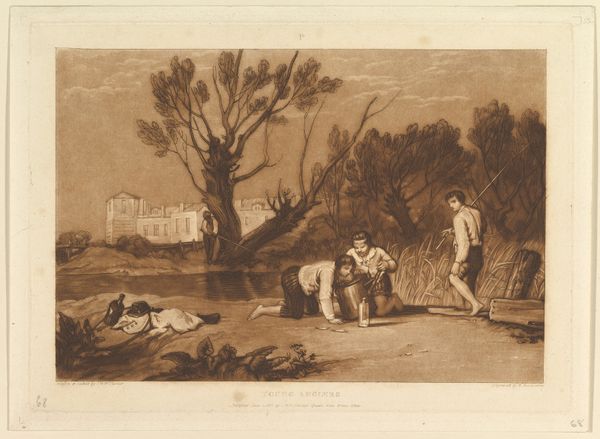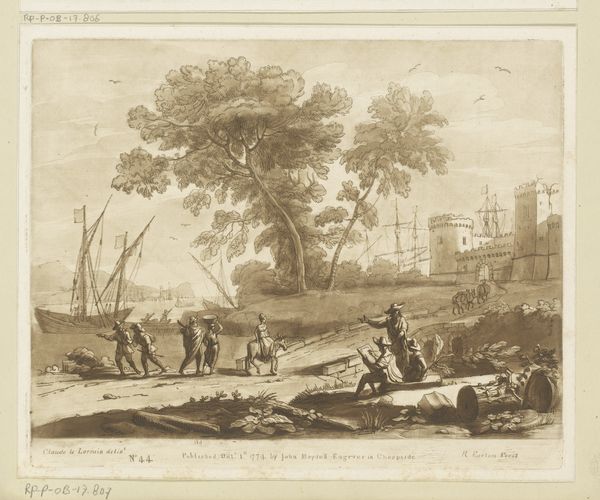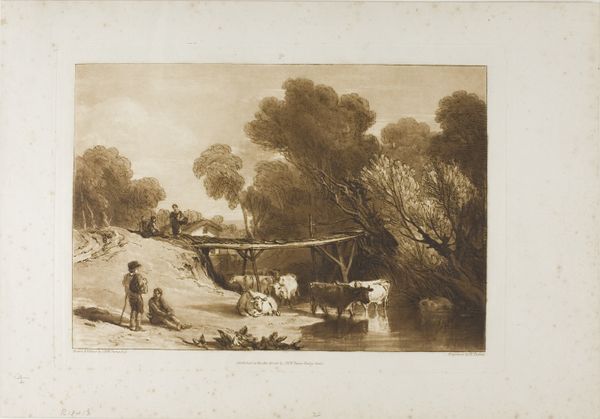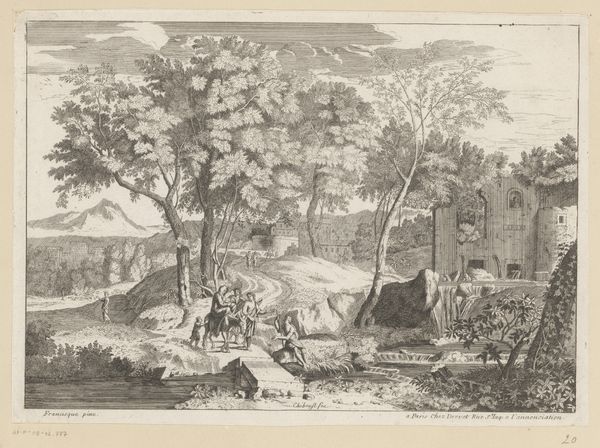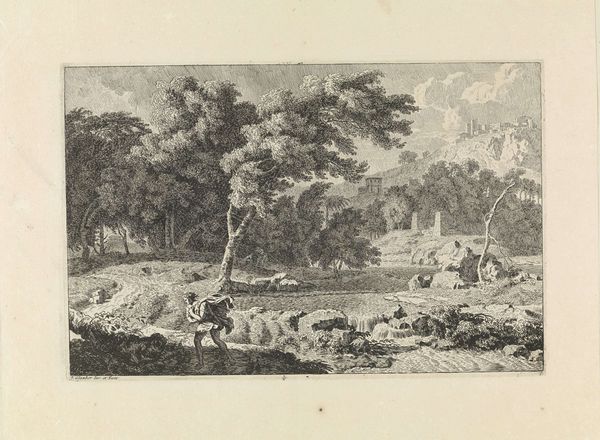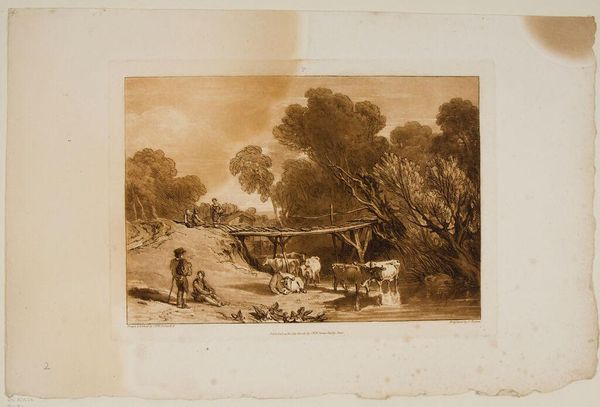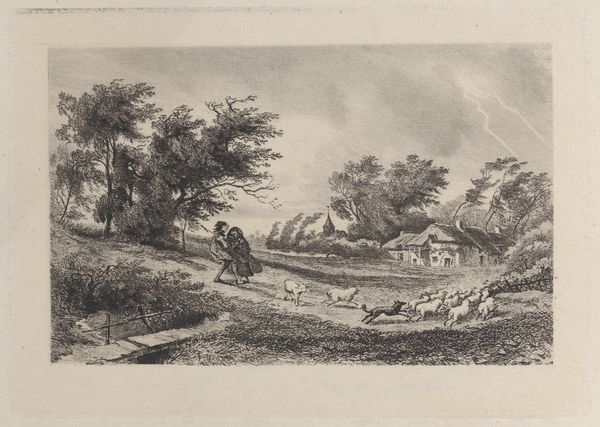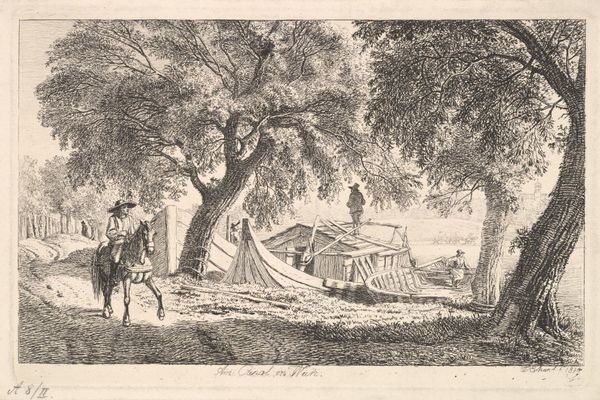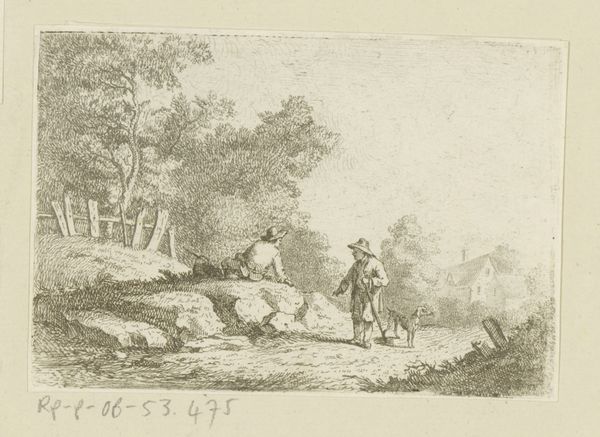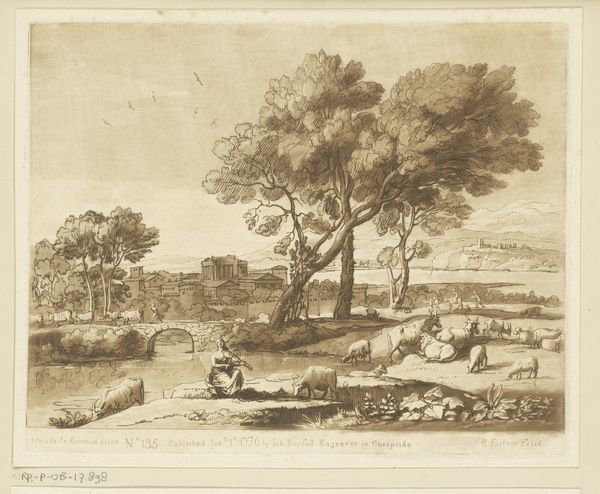
Hedging and Ditching (Liber Studiorum, part X, plate 47) 1812
0:00
0:00
drawing, print, etching
#
drawing
# print
#
etching
#
landscape
#
romanticism
#
men
#
genre-painting
Dimensions: plate: 7 5/16 x 10 1/4 in. (18.6 x 26 cm) sheet: 8 3/8 x 11 9/16 in. (21.3 x 29.4 cm)
Copyright: Public Domain
Curator: J.M.W. Turner's "Hedging and Ditching," a print from 1812 currently residing at the Metropolitan Museum of Art. My initial response is drawn toward the overall mood it conveys. It’s almost pastoral, yet deeply melancholic. Editor: Indeed. Notice the composition, how Turner has carefully orchestrated tonal gradations achieved through etching and mezzotint, to build layers of depth. See how the foreground, dominated by a dense thicket and laborers, gradually dissolves into the softer, idyllic background dotted with grazing sheep. It's a masterful study of light and shadow. Curator: For me, it evokes the realities of rural labor at a crucial historical juncture in Britain. The scene depicts men engaged in the traditionally gendered task of managing and maintaining boundaries on the landscape – building hedgerows and digging ditches. These practices speak to systems of land enclosure and agriculture but I see their relationship to early forms of capitalist infrastructure that disenfranchise common people of their lands. Editor: Certainly, one could argue that the laborers' physical exertions depicted in their work can also stand alone in isolation as beautiful examples of tonal complexity and textural richness. Consider the contrast, again, between the gnarled, detailed tree trunk and the distant, luminous sky. The foreground’s darkness is counterweighted in this landscape of binaries—rough/smooth, near/far, substantial/ethereal—resulting in a compositional unity. Curator: Right, but perhaps Turner is also signaling the fragility of this way of life amidst the industrial revolution. These laborers—their figures subtly rendered—become emblematic of broader economic changes impacting English society. It invites us to consider the socio-political dimensions embedded in the picturesque landscape tradition. It reminds me of Raymond Williams’ ideas. Editor: Ah, but look at the overall pictorial effect – Turner uses aquatint with incredible delicacy, the print emulating the look and feel of a watercolor, a medium for which he was celebrated. His attention to formal arrangement creates a compelling visual structure in itself, distinct from social critique. Curator: A fair point. Ultimately, it is perhaps that tension between pure visuality and historical context that makes this image resonate so deeply. Editor: Precisely! Thank you, a very perceptive consideration of Turner's work.
Comments
No comments
Be the first to comment and join the conversation on the ultimate creative platform.
